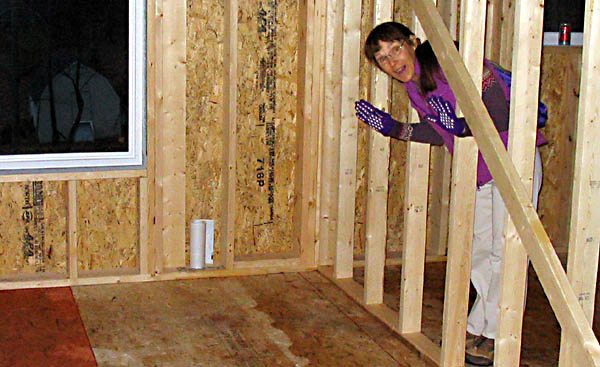Our Review of
EPA's Home
Buyer's and Seller's Guide to Radon
When building a new home, that's the best time to install your Radon mitigation.

Introduction: When building a new home, that's the best time to install your Radon mitigation devices. When we built our home, before the concrete was poured, it was easy to get a simple Sub-Slab Depressurization System installed. What's that? Basicially it's a simple coil of plastic tubing that snakes around underneath the slab, and leads to a simple fan that pulls air out from under the slab and directs it to the outdoors. Therefore, any Radon under the slab is expelled, with the idea being that the Radon will not build up in the home. And it works!
The EPA guide explains a lot of options for Radon mitigation for new homes.
On this page: I'm Buying or Building a New Home.
The EPA answers the question, "How Can I Protect My Family?"
a. Why Should I Buy a Radon-Resistant Home? Radon-resistant techniques work. When installed properly and completely, these simple and inexpensive passive techniques can help to reduce Radon levels.In addition, installing them at the time of construction makes it easier to reduce Radon levels further if the passive techniques don't reduce Radon levels to below 4 pCi/L. Radon-resistant techniques may also help to lower moisture levels and those of other soil gases. Radon-resistant techniques:
Make Upgrading Easy: Even if built to be Radon-resistant, every new home should be tested for Radon as soon as possible after occupancy. If you have a test result of 4 pCi/L or more, a vent fan can easily be added to the passive system to make it an active system and further reduce Radon levels.
Are Cost-Effective: Building Radon-resistant features into the house during construction is easier and cheaper than fixing a Radon problem from scratch later. Let your builder know that Radon-resistant features are easy to install using common building materials.
Save Money: When installed properly and completely, Radon-resistant techniques can also make your home more energy efficient and help you save on your energy costs.
Including passive Radon-resistant features in a new home during construction usually costs less than fixing the home later. If your Radon level is 4 pCi/L or more, consult a qualified mitigator to estimate the cost of upgrading to an active system by adding a vent fan to reduce the Radon level. In an existing home, the cost to install a Radon mitigation system is about the same as for other common home repairs.
The takeaway, according to EPA, "Check with, and get an estimate from, one or more qualified mitigators before fixing."
This series is provided to inform about Radon at Lake Tahoe and beyond. On each page, you can view more by clicking on one of the navigation links below.
Airthings gets our glowing review for its line of air quality detectors. In particular, we have used the Airthings Corentium Radon Detector, and like it! We purchased our Airthings Corentium over seven years ago, and it has been reliable and accurate for detecting Radon levels in our home and office. It's definitely recommended for monitoring Radon. Plus, if you ever need to install any Radon mitigation devices, this constant monitoring device can help you to know how well your system is working, in order to keep your home Radon levels down. Check it out on Amazon, where you can read other reviews and get your best price.
Home Air Quality Monitors
A Radon detector is only one home monitor that you can use to check the indoor air quality of your home at Lake Tahoe and beyond. Here's a handy link to home air quality monitors and other air quality products.
Navigation: More Radon Information
|
|
|

